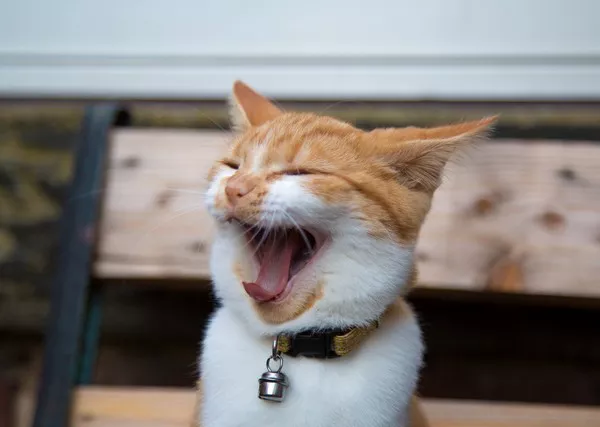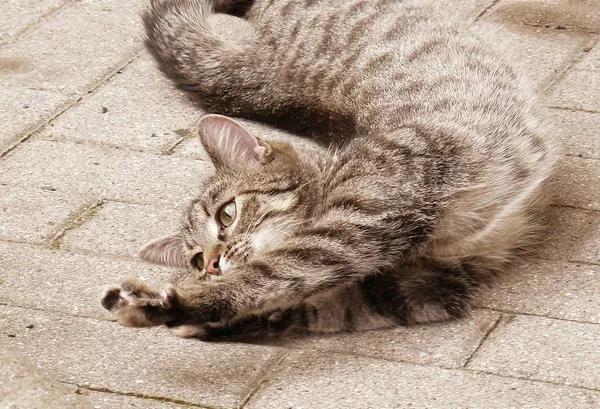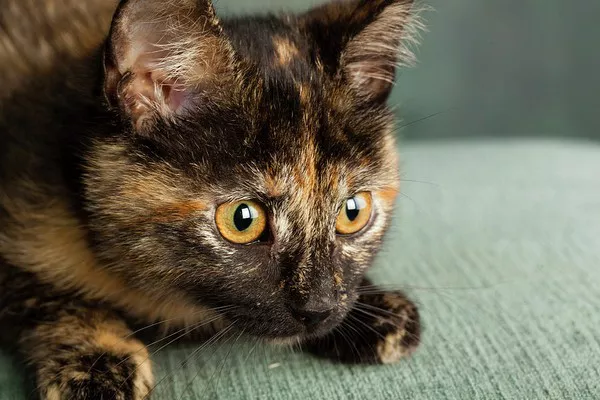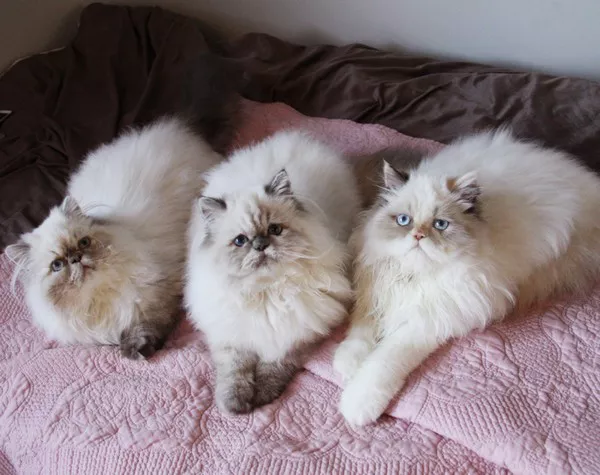The gentle purring of a cat is like a soothing melody, creating an ambiance of comfort and connection. When your feline friend curls up next to you for a nap and purrs away, it triggers curiosity. In this comprehensive exploration, we delve into the fascinating question: Why does my cat purr when sleeping next to me? Unraveling the layers of communication, emotional bonds, and physiological wonders that accompany this serene behavior provides insight into the intricate world of feline companionship.
The Language of Purring: A Multifaceted Communication Tool
Kittenhood Purring: Foundations of Comfort
From the early days of kittenhood, purring serves as a comforting language. Discover how kittens use purring to communicate with their mother and littermates, creating a foundation for a lifetime of expressive feline vocalization.
Adulthood Purring: A Dynamic Tapestry of Emotions
As cats grow into adulthood, purring evolves into a dynamic means of communication. Explore the multifaceted nature of purring in adult cats, understanding how it conveys emotions such as relaxation, contentment, and even acts as a form of self-soothing during moments of stress.
Nuances in Purring: Deciphering the Feline Melody
Purring is not a one-size-fits-all communication tool. Delve into the nuances of purring, exploring variations in sound, pitch, and intensity. From the gentle purr of contentment to the rhythmic purring during sleep, understanding these variations provides insights into your cat’s emotional state.
Bonding Ritual: Purring as a Symbol of Trust and Affection
Physical Touch: The Power of Bonding through Contact
Cats are known for selective affection, and when they choose to snuggle and purr next to you during sleep, it’s a testament to the bond you’ve cultivated. Understand the significance of physical touch and how it strengthens the emotional connection between you and your feline friend.
Social Cue: Positive Interaction Reinforcement
When a cat purrs during sleep next to you, it acts as a social cue, reinforcing positive interactions. Explore how this behavior fosters a sense of security and mutual trust, contributing to a harmonious and affectionate relationship.
Healing Power: Purring for Stress Reduction and Comfort
Purring has been associated with healing properties for both cats and humans. This section explores the stress-reducing benefits of a cat’s purr, how it promotes a sense of calm, and contributes to an overall feeling of comfort during sleep.
Physiology of Feline Purring: The Intricate Mechanisms at Play
Autonomic Nervous System: The Conductor of Purring
Understanding the autonomic nervous system is pivotal in comprehending a cat’s ability to purr. Explore how the brain signals the vocal cord muscles to produce the distinctive sound associated with purring and how it correlates with the cat’s state of relaxation or arousal.
Purr Frequencies: Therapeutic Effects Unveiled
Purring frequencies have therapeutic effects, and research has delved into their potential benefits for cats and humans. Uncover the therapeutic properties of specific purr frequencies and their potential contributions to pain relief, wound healing, and stress reduction.
Purring Paradox: Sleep and Wakefulness Dynamics
Cats often purr during sleep, but why does this behavior extend beyond waking hours? This subsection explores the paradox of purring during both sleep and wakefulness, uncovering the various contexts in which a cat may engage in this soothing vocalization.
Dreamscapes of Purring Slumber: Navigating Feline Sleep Patterns
REM Sleep: Dreams in the Cat’s World
Cats experience rapid eye movement (REM) sleep, a phase associated with dreaming. Explore the characteristics of REM sleep in cats and how it contributes to the occurrence of behaviors such as purring during sleep.
Purring and Sleep Cycles: A Synchronized Symphony
The correlation between purring and specific sleep cycles reveals intriguing patterns. Investigate how purring aligns with different stages of sleep, providing insights into the cat’s physiological and emotional experiences during slumber.
Interpreting Purring Behaviors: Serenity or Discomfort?
Purring during sleep can convey a range of emotions, from contentment to distress. Guide pet owners in interpreting the nuances of purring behaviors, offering insights into when purring is an expression of serene slumber and when it may signal underlying discomfort.
Environmental Factors: Crafting the Perfect Sleep Sanctuary
Optimal Sleep Conditions: Temperature, Lighting, and Comfort
Cats thrive in comfort, and providing an optimal sleep environment is essential. Delve into factors such as ambient temperature, lighting conditions, and the availability of cozy spots that contribute to a cat’s restful slumber.
Safe Spaces and Security: The Cat’s Sleeping Haven
Cats seek out safe and secure spaces for sleep. Explore how the availability of designated sleep zones, cozy bedding, and a quiet atmosphere influences a cat’s choice of sleeping location and may contribute to purring during sleep.
The Human Element: Your Presence Matters
The presence of a human companion significantly influences a cat’s sleep patterns. Understand how your presence, soothing interactions, and the comfort of shared sleep spaces contribute to a cat’s decision to purr during sleep.
Addressing Concerns: When to Seek Veterinary Guidance
Normal vs. Abnormal Purring Behaviors
Distinguishing between normal and abnormal purring behaviors is crucial. This subsection outlines what constitutes normal purring during sleep and explores signs that may indicate underlying health concerns, guiding pet owners on when to seek veterinary guidance.
Potential Health Issues: Recognizing Discomfort Signs
Purring can be influenced by a cat’s physical well-being. Explore how respiratory distress, pain, or discomfort may manifest in changes to purring behaviors during sleep, offering insights into when to consult with a veterinarian.
Veterinary Examinations: Navigating Diagnostic Measures
When in doubt, consulting with a veterinarian is paramount. Provide guidance on what to expect during a veterinary examination, including diagnostic measures that may be employed to assess a cat’s health and well-being.
Conclusion: Nurturing the Feline Serenity
In conclusion, the question of why your cat purrs when sleeping next to you unravels a tapestry of feline communication, emotional bonds, and physiological wonders. Purring during sleep is a testament to the deep connection you share with your feline companion, reflecting their contentment and sense of security. By understanding the language of purring, feline sleep patterns, and the environmental factors that contribute to a cat’s well-being, you embark on a journey of enriching the serenity of your feline friend’s slumber. This comprehensive guide aims to empower cat enthusiasts with the knowledge needed to appreciate the enigmatic melody of feline sleep and the soothing purrs that accompany it.



























